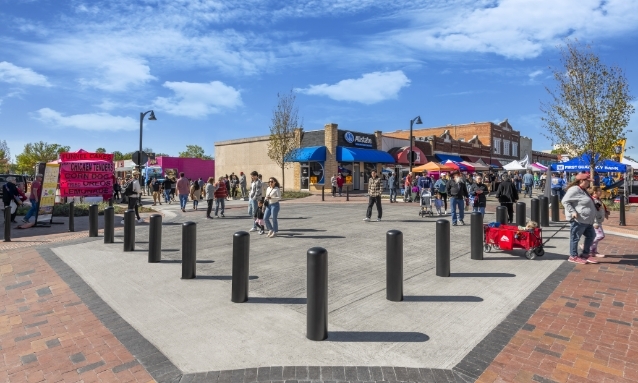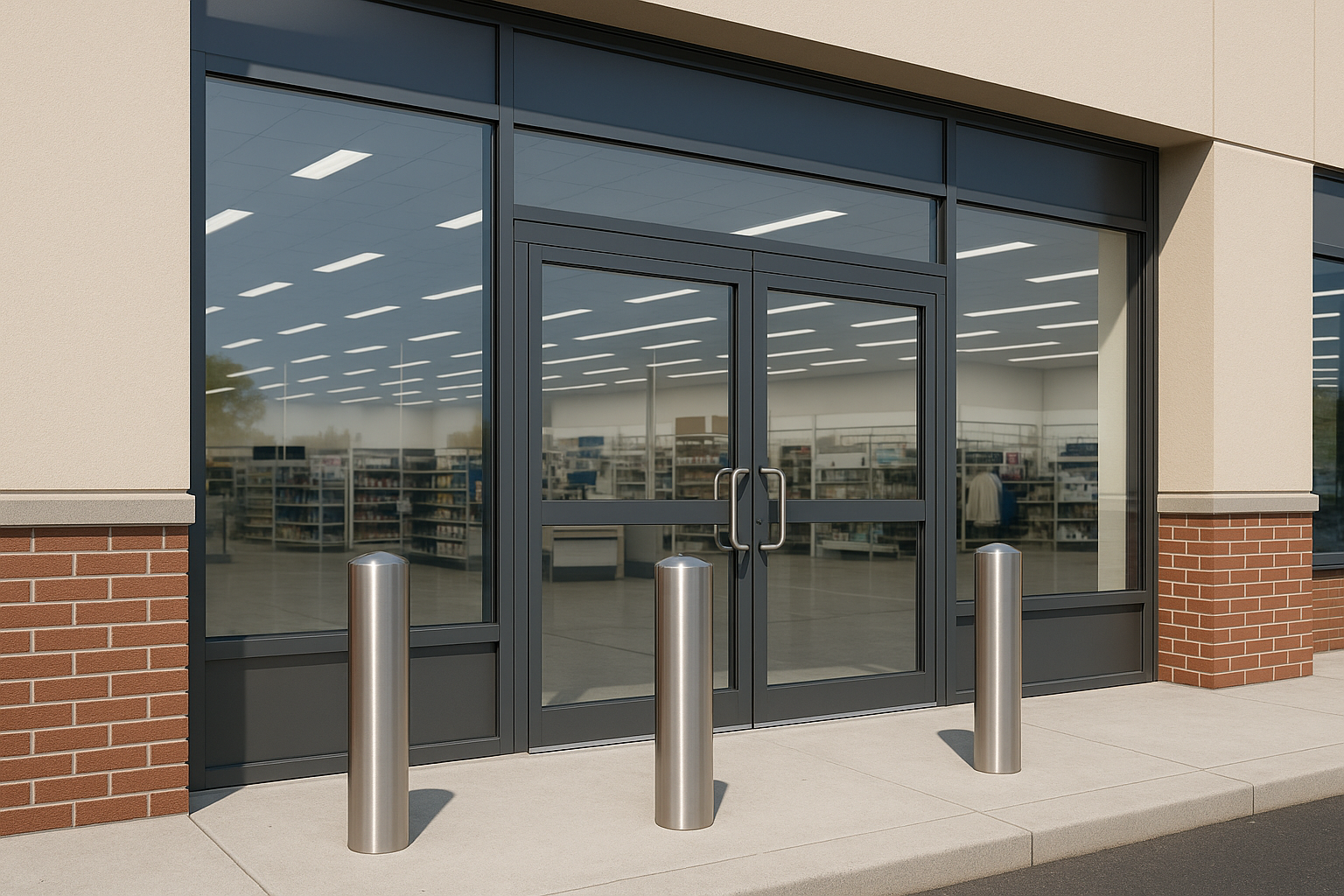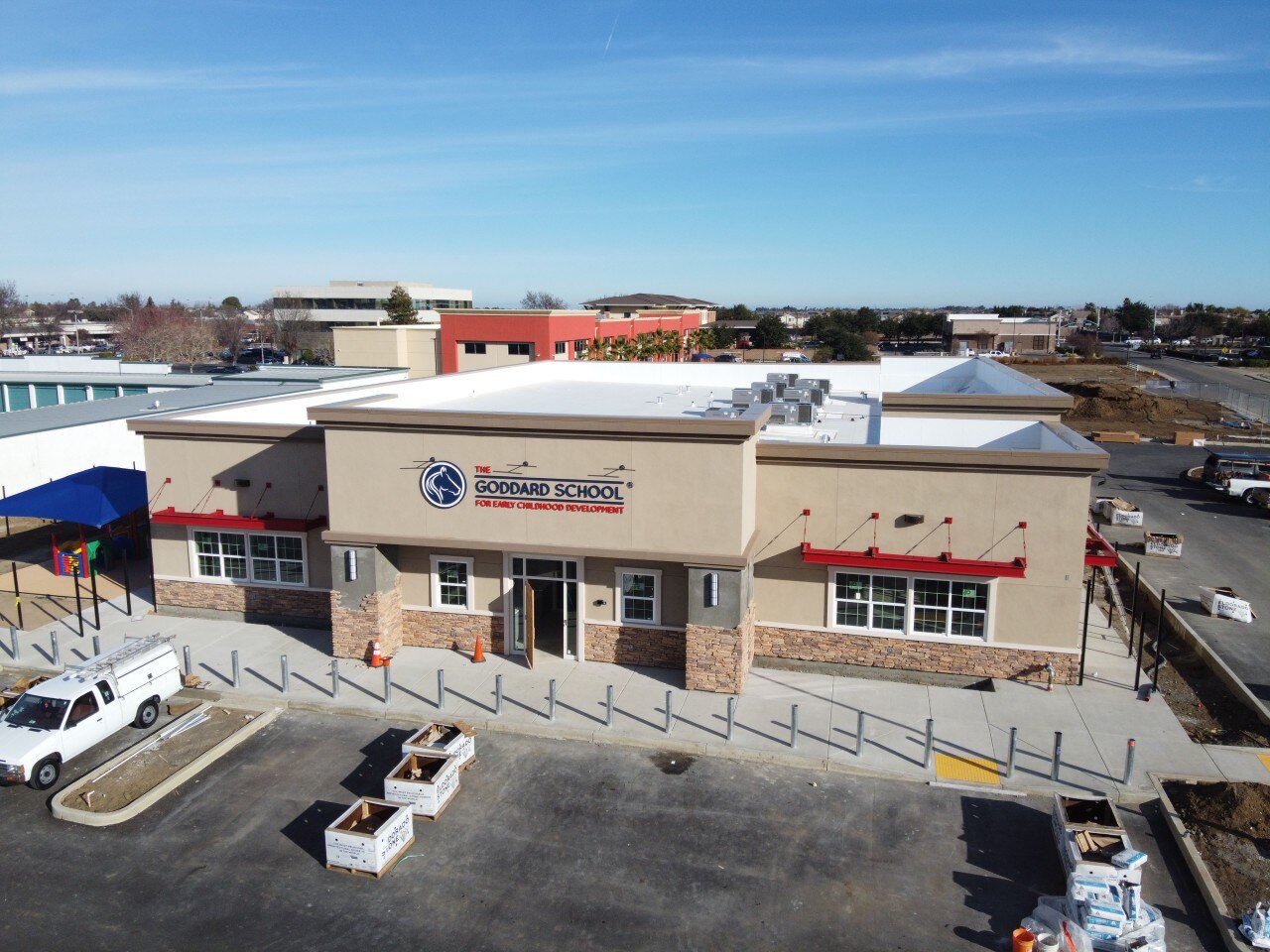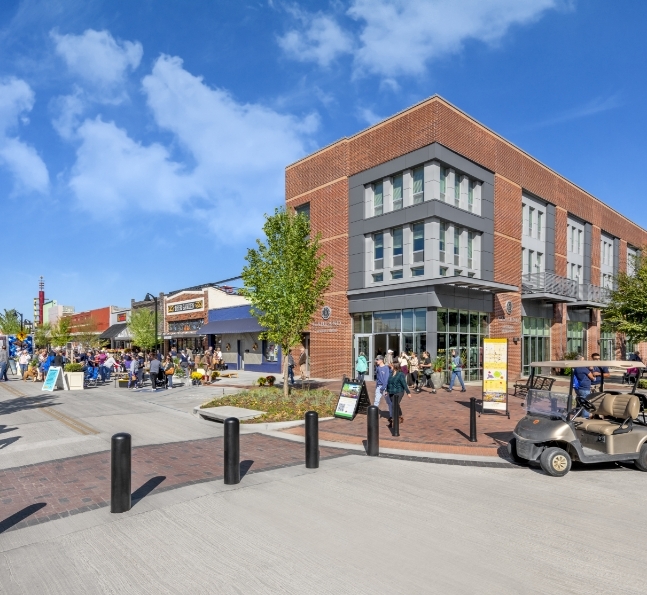Building Impact Protection
Bollard Crash Ratings: Guide to Crash Rated Bollards
Crash rated bollards are used in a number of applications and are available in a wide range of tested options. Crash rated bollards are available in a variety of materials; from 304 stainless to galvanized, to powder coated. Some have been tested with HDPE bollard covers or lighted bollard covers. Permanent and as well as removable tested bollard solutions are available. Further, after years of testing a variety of installation methods are now available.
However, determining the right crash rated security bollard can be complicated. The first step in finding the right security solution is to assess the threat to a given area to be protected. A variety of factors go into this determination:
- What and whom are being protected.
- The accessibility of a building or pedestrian area.
- Parking lot design (ability of a vehicle to reach higher speeds.)
- Exposure of pedestrians to vehicular traffic.
- Other considerations include the feasibility of a bollard (weight in the case of a removable bollard), ease of deployment, and other site specific conditions.
- A traffic engineer in conjunction with a security expert may be required to determine the correct solution.
ASTM F3016 vs. ASTM F2656 Standard Test Methods
Bollard crash ratings are typically determined by three specifications:
- Vehicle weight (5,000 lbs. ASTM F3016), (15,000 lbs. ASTM F2656)
- Vehicle speed (10, 20 & 30 MPH, ASTM F3016), (30, 40 & 50 MPH, ASTM F2656)
- Penetration of the vehicle into the protected zone (<1' - < 4', ASTM F3016), (3.3' - 98.4' ASTM F2656.)
Crash Rating Standards:
ASTM F3016: The ASTM F3016 crash test standard was developed to address low speed vehicle incursions, particularly in storefront applications. An ASTM F3016 crash rated bollard has stopped a 10 MPH (S10), 20 MPH (S20), or 30 MPH (S30) impact of a 5,000 lb. vehicle at an accredited testing facility.
Application Indications:
In applications where there is a low risk of an intentional hostile act, good parking lot design with low risk of a high speed run up, an ASTM F3016 crash rated bollard may be an ideal solution. Often, storefronts pose a risk to an unintentional vehicle incursion. Often these are caused by driver error. Outdoor seating areas and street festivals are often ideal applications for a low speed crash rated product.
ASTM F2656 Crash Ratings
The crash ratings under the ASTM F2656 standard have changed as follows:
K-Rated Bollard Ratings (old ratings)
K-ratings were developed in 1985 (revised 2003) by the Department of State. A product was given certification based on how far the front bumper of a 15,000 lb. vehicle travelled past the barrier. The K-ratings also limited certification to 50' or less past the barrier.
M-Rated Bollards (new ratings)
The new M-ratings have since replaced K-ratings and are governed by the American Society for Testing and Materials (ASTM). The primary difference is that certification is given based on how far the payload travels past the barrier. Additionally there is no limit to how far the vehicle can travel past the barrier to be certified. According to the ASTM, anything that travels beyond 98.41' can be given a P4 certification.
Application Indications:
In applications where there is an ability for a vehicle to gain high speed (intentional or otherwise), it may be advisable to seek out a bollard solution rated to ASTM F2656. Often Federal and Government buildings fall into this category. Other vulnerable areas where pedestrians are at risk of an errant vehicle at high speed penetrating a storefront, outdoor seating area, or street festival may want to consider a M rated bollard.
The following infographic displays cerifitied and engineered (denoted by *) products.
Engineered & Tested
- Engineered: Engineered products have been engineered (calculations, design, finite element analysis) to meet a particular designation within a referenced standard. Engineered does not qualify as a crash rating.
- Just because a bollard has been tested doesn’t mean it has passed a test. Always request a full-scale crash test summary from the bollard manufacturer that details actual test performance and verify that the tests were conducted to the ASTM F3016 standard at an accredited testing facility. Beware of unverifiable “independent” tests.
What are the ASTM Vehicle Types Tested?
ASTM has developed crash certifications for different types of vehicles. They are as follows:
- S-ratings: surrogate test vehicle (5,000 lb.)
- M-ratings: medium-duty truck (15,000 lb.)
TrafficGuard is Here to Help with Crash Rated Bollards
If you want to learn more about crash rated bollards, TrafficGuard is a leading anti-ram and security bollard manufacturer for a variety of industries, and since 1999, we’ve been the leader in the manually operated bollard industry. Go here to view our crash-rated bollards.






